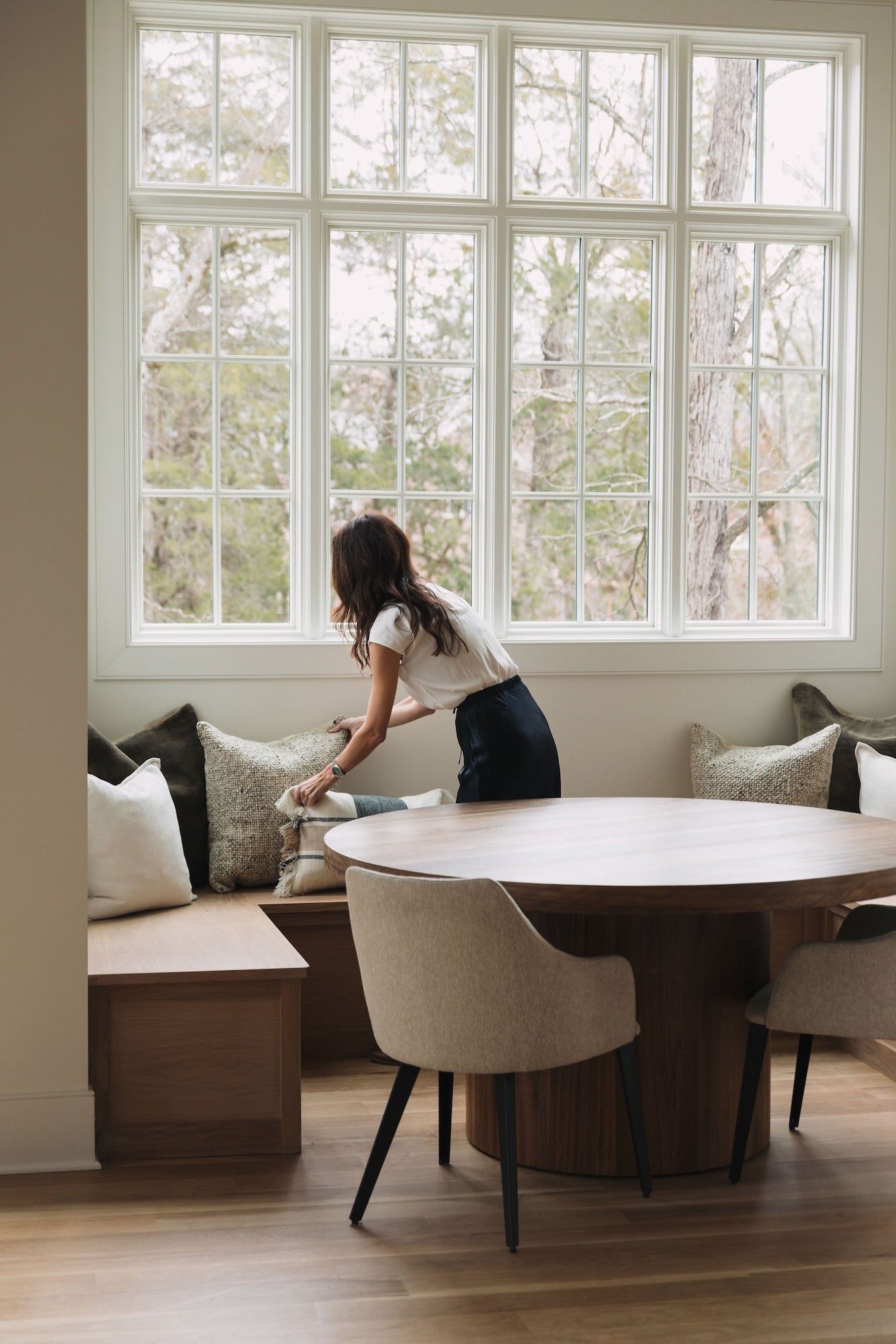design advice
A New Spin on an Old Room

Find yourself with ants in your design pants? It’s normal.
We live in an era that champions constant and quick change, so it’s no wonder we want that for our homes, too. We’re exposed to so many design trends with such frequency that we barely have time to drink a cup of coffee before the table we consumed it on is “out of style.”
But before you make grand (and expensive) design gestures, it’s worth noting that you don't have to take a sledgehammer to your walls to make your home feel new. Sometimes all it takes is a fresh perspective. Smaller, intentional adjustments can be just as satisfying—not to mention far less taxing—than full re-designs.
When I find myself bored with a space and aching for something new, here are my top six strategies to put a new spin on an old room.
1. Get off social media.
I know, I know. This isn’t the advice you wanted. I’m not your mother or your psychologist or even your reliable best friend who keeps your tail in check. But for what it's worth: we often get discontent with our spaces and our things because we’re comparing them to others. If you log out for a few days and find space to be in your own wilderness, you might find that in the light of day you’re actually quite happy with your home.
2. Rearrange the furniture.
If you passed step one and are still feeling the itch, it’s time to turn to the OG of options. When in doubt, always try a new layout. Sometimes it’s not the pieces themselves that are tired, but their configuration. Move the same furnishings within a room or, even better, mix and match with pieces from other spaces. While you can do this the old fashioned way and start moving things around with great huffing and puffing in your yoga pants, I’d recommend measuring your room and trying out some layouts in a scaled floor plan. There are so many user-friendly software options these days that it’s really wise (and probably better for your marriage) to see if your idea will work before moving the 300-pound china cabinet.
3. Replace the rug.
When I start a room design, I most often begin with the rug. At a large scale, it’s the foundation and background of a design that creates a sweeping, saturated layer. If you’re looking for a power move, changing out the rug will give you a definitive design change in just one stroke. (Caveat: if your original rug is a vintage or heirloom piece, move on to tip 4. This is a great option for those who had transitory rugs prior, not heritage pieces. Let’s be sensible, people.)
4. Change your wall treatments.
In the same way the rug is a large canvas for the floor, the walls and ceiling pack a punch simply by sheer surface area. Adding new paint or installing wallpaper places your home in an entirely new setting. Keep in mind that while changing your wall treatments is “easy” because it’s just one item, it’s definitely a time and labor commitment. I’d recommend putting some samples on the wall and living with them for a few days before going full title on the forest green.
5. Add new light fixtures.
Often when you’re in a room your eyes gravitate to the light fixtures first. While rugs and walls are the background, the lighting is the top layer. Floor and table lamps are often positioned at eye level, and ceiling fixtures are designed to be centerpieces. Swapping out light fixtures allows you to redefine the focal elements in your room, immediately refreshing the first impression.
6. Swap out textiles.
Lastly, swap out your textiles. From throw pillows to blankets, these smaller elements often provide the color and pattern punch in your space. By just changing out these accessories, you can quickly transform the personality of your room from basic to bold, playful to polished. I know I get bored with my rooms sometimes too, and I try to swap out my textiles seasonally, storing alternate options in the attic elbow-to-elbow with Christmas decor. The change is small but always welcoming, like a fresh set of laundered sheets.
design with mayker
Experts in Livable Luxury
At Mayker, we believe in creating beautiful, functional environments that inspire people to live well. We don't just want you to love how your home looks; we want to spark comfort, joy, inspiration, and productivity. Your home's design should support and improve how you experience your day—whether that's creating a haven for hosting, chasing toddlers through the hallway, or designing a true retreat full of calm and poise.





